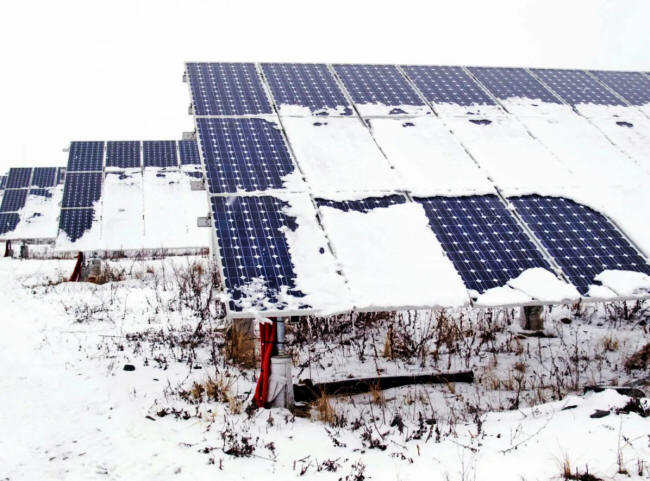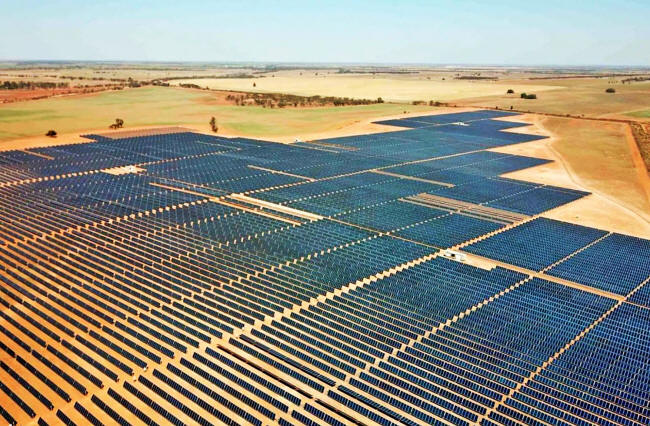|
by Robert Bryce
639 rejections or restrictions on US wind or solar projects since 2015...
From rural England to the Osage Nation in Oklahoma, local communities are telling alt-energy developers to take their projects and put them where the sun doesn't shine and the wind doesn't blow.
As I have documented in the Renewable Rejection Database, there have been at least 639 rejections or restrictions of wind or solar projects in the U.S. alone since 2015.
Why are so many communities objecting?
Communities don’t want their landscapes and views destroyed by oceans of solar panels and forests 600-foot-high wind turbines. (AP Photo)
The answer is simple:
Don't blame yourself if you haven't heard about these rejections.
The widespread opposition to wind and solar doesn't fit the narrative that's relentlessly pushed by the New York Times, National Public Radio, and other big media outlets about the "energy transition" and "clean" energy
Nor do they fit with claims made by the Biden administration, which has repeatedly touted its goal of having a,
These myriad rejections are a massive problem for corporate interests that are trying to build huge new wind and solar projects.
Indeed, rural communities are standing between big business and tens of billions of dollars in tax credits.
According to the latest numbers from the U.S. Treasury, this year alone, the production tax credit (used primarily for wind energy) and the investment tax credit (primarily solar) will cost taxpayers $35 billion.
For reference, the oil and gas industry's most significant tax credit, the depletion allowance, will cost taxpayers about $1.6 billion.
Given the vast sums at stake, it's not surprising that lobbyists for the wind and solar sectors are pushing measures that strip local communities of their zoning authority and hand that authority to state bureaucrats.
In fact, four heavily Democratic states, New York, California, Michigan, and Illinois, have recently passed measures that do precisely that.
But before delving further into what's happening across the U.S., here's a quick roundup of what's happening overseas.
Last December, a French court ruled that a wind project in southern France near the town of Luna must be dismantled due to,
According to one news report,
In March, a judge in Ireland sided with local landowners and ruled that the noise pollution generated by a wind project in County Wexford built near their properties amounted to a "nuisance to the plaintiffs."
The judge also wrote,
Damages in the case have yet to be determined.
In England, the solar rejections are piling up so fast it's challenging to keep track.
Since January, local authorities have rejected,
After the rejection of the Holbeach solar project, a local politician, Nick Worth, said the land,
In January, an Australian court rejected an application for a 10-megawatt solar project proposed near Mudgee in New South Wales.
The ruling confirmed the judgment of a regional council that had determined the project would be an "alien feature" on the landscape and that the area would be "irreversibly changed" by the 25,000-solar panel facility.
Solar farm in Australia has an enormous giant footprint.
Last year, in Canada, regulators in Alberta imposed a moratorium on all wind and solar projects
In February, provincial officials announced updates to their regulations, including a ban on alt-energy projects on prime agricultural land.
Further, in an unprecedented move, the rules will require a 35-kilometer (21.7 miles) buffer zone between wind and solar facilities and protected areas or "pristine landscapes."
Alberta Premier Danielle Smith said the new regulations were made in response to Alberta residents who,
Back here in the U.S., in February, local officials in Tennessee vetoed a proposed solar project that was supposed to help fuel a data center owned by Facebook parent Meta Platforms.
According to the Memphis Commercial Appeal,
The Shelby County denial is one of 212 rejections or restrictions of solar that have occurred since 2017.
Meanwhile, as we show in our new five-part docu-series, "Juice - Power, Politics & The Grid," the Osage tribe is prevailing in the longest-running legal battle over wind energy in American history:
JUICE (Episode 1) - Texas Blackout
Here Part 2, Part 3, Part 4 and Part 5
In December, a federal judge in Tulsa ruled that Enel, the Italian company, violated the tribe's sovereignty when it built a 150-megawatt wind project on Osage traditional land but did not obtain mining leases from the tribe.
The judge ordered the company to remove all 84 wind turbines, which the company says will cost about $300 million.
The federal court ruling is an embarrassing and costly loss for Enel and a massive black eye for the U.S. wind industry, which has repeatedly tried to roll over rural communities in its inexorable thirst for tax credits.
Despite the importance of the decision, it's been largely ignored in the media.
Legacy media outlets may refuse to honestly report on the growing backlash against wind and solar projects, but the facts on the ground are clear.
The binding constraint on the growth of solar and wind around the world is that fewer and fewer communities are willing to accept the landscape destruction that comes with large alt-energy projects.
And no amount of PR or spin can change that fact...
|




